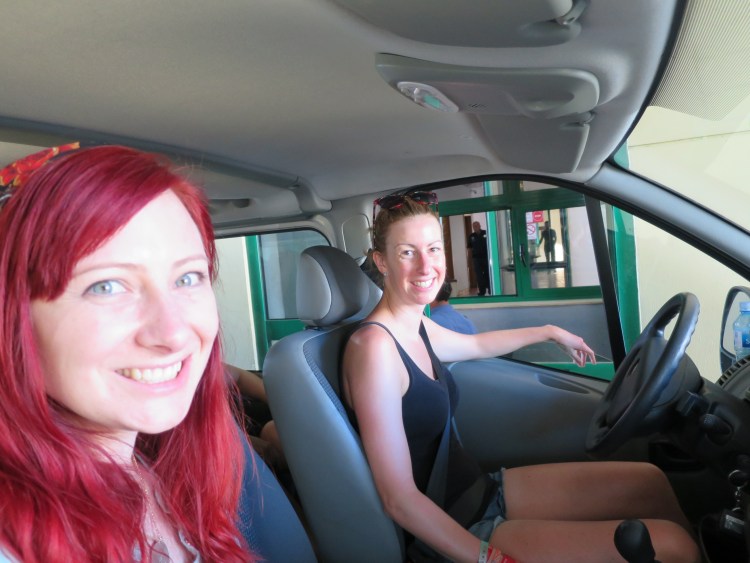(Croatia, Bosnia and Herzegovina, Montenegro, and Albania)
Renting a car and driving abroad via your own route can be lots of fun, as long as you are prepared and understand the local road rules and laws. Always research your destination, the road rules, and your route, especially if you are travelling to more than one country.
There are several websites that can provide you with up-to-date information about driving abroad:
When we were searching for a car hire company in the Balkans we found it quite difficult to find one that would provide us with the papers and full insurance to enter all of the countries we wanted to visit without paying a large fee.
Insurance and Green Cards: Not all insurers cover driving in Bosnia and Herzegovina so check before you go – if yours doesn’t, you can buy temporary cover at all border posts except Neum. You will also require a Green Card with proof of insurance to enter Montenegro and Albania.
We also found that we were could be charged up to €500 to return our car to a different location to where we started. To hire a car within our budget, we had to change our route to start and finish in the same country.
We used car hire search engines and Google search to finally find a company that was suitable.
Mihajlo from EasyRent was so professional and very quick to get back to me via email at anytime of the day when I had any questions or concerns about insurance or driving across the Balkans. But EasyRent lived up to their name and really was easy and they provided us with full insurance and papers to cross borders. They also dropped the car off to us in Zagreb and collected it in Dubrovnik.

What is required to drive in the Balkans
When driving abroad the following documents should be carried at all times and be shown at any border crossings:
- Full, valid driving licence
- Proof of Insurance (third party or above)
- Proof of ID (Passport)
- Proof of ownership (V5C Certificate)
In Bosnia and Herzegovina, Montenegro and Albania you are also required to carry:
- A Green Card – it backs up your motor insurance documents and shows you’ve got the minimum legal level of cover. You can get one from your insurance company
In Albania you are also required to carry:
- International Driving Permit, IDP 1949 (unless your Driving licence is issued in EU and EEA countries)
While driving in many European countries you are required by law to carry the following items. Hefty on-the-spot fines can be issued for failing to carry specific items:
- Headlamp beam deflectors (Depending on your car, you will either need deflector stickers or have to adjust the beam manually)
- Reflective jackets (to be used in the case of a breakdown or accident outside built-up areas, on expressways and on motorways)
- Warning triangle (compulsory in every vehicle with 4 wheels or more)
- First aid kits (compulsory when travelling in Croatia)
- A self-test breathalyser (in France since July 2012)
General tips and road rules for driving in the Balkans
Overtaking & passing: Drive on the right, overtake on the left. Dangerous overtaking can result in an on-the-spot fine. The rules are in accordance with the Convention on Road Traffic 1968.

Seat belts: It is compulsory for the occupants of all vehicles equipped with seat belts to wear them at all times, on front and rear seats, irrespective of the country of registration of the vehicle.
- Drive with lights on at all times during the day and night. Vehicles must have their passing lights (dipped headlights) on at night and in case of bad visibility, and during the day in Croatia, Albania and Montenegro.
- It’s a good idea to avoid driving at night, if you can, as many roads have no lighting
- If you’re involved in an accident, you must wait until the police arrive
- On mountain roads, you have right of way going uphill
- You must stop at pedestrian crossings, as soon as someone shows they want to cross
- In winter, mountain roads are snowy and icy and driving can be very hazardous. It is recommended that cars be adequately equipped from 1 November to 1 April.
- The horn should be used in moderation to warn of approach, or when necessary to avoid an accident.
Speed limits will change in every country and be different for built-up areas and outside of built up areas. You can be fined for speeding in all countries in the Balkans.
In Croatia, speed limits in built-up areas: 50 km/h unless otherwise indicated by road signs. The speed limit outside built-up areas is 90 km/h on roads, 110 km/h on expressways, 130 km/h on motorways for vehicles up to 3.5t.
In Bosnia and Herzegovina, the speed limit is 60kph in built-up areas, 80kph on open roads and 120kph on motorways, unless the signs say otherwise.
Tolls: There are some toll roads in most countries. In Croatia, there are tolls levied on seven stretches of motorway, and on some other roads. They can be paid in cash, by credit card (American Express, Diners, Mastercard, Maestro, Visa) or by means of subscription. Payment can also be made in foreign currencies.
Fuel stations are generally open from 0700 hours to 1900 and are situated along major stretches of road, expressways or motorways. When we visited in 2015, unleaded petrol was approximately 11 HRK per litre, while Diesel fuel is approximately 10 HRK per litre.







No Comments